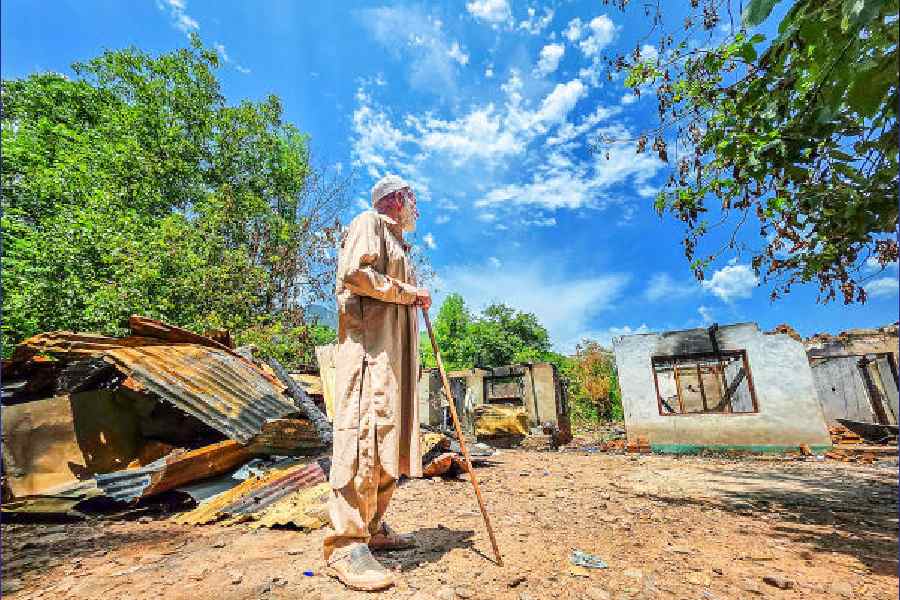New Delhi, Jan. 30: Scientists, using bone marrow samples from members of the Idu Mishmi community in Arunachal Pradesh, have discovered a hideout in the human body where tuberculosis bacteria can lie dormant for years.
A collaborative study by Indian and US scientists has identified stem cells in the bone marrow that seem to serve as a “protective niche” for TB germs to evade the action of drugs and the human immune system.
The study, published today in the journal Science Translational Medicine, relied on samples of bone marrow cells provided by volunteers among the Idu Mishmi community living in a remote mountain range in the Lower Dibang Valley of Arunachal Pradesh. By volunteering to participate in the study, scientists say, this indigenous community has contributed to efforts to resolve a long-standing mystery of medicine.
While effective antibiotics have been available to treat and cure TB for more than 50 years, TB bacilli remain in the body despite a successful course of treatment and can cause the disease to recur after years, or even decades.
Now Bikul Das at the Stanford University Medical Centre and his collaborators have found that cells called mesenchymal stem cells (MSCs) in the bone marrow appear to provide a “long-term protective” burrow for TB bacteria.
“We think we’ve got their hiding place,” said Das, who graduated from Gauhati Medical College and Hospital before moving abroad for study and research. “We’ve got evidence for the presence of TB bacteria in human bone marrow MSCs.”
The researchers collected bone marrow samples from nine volunteers from the Idu Mishmi community who had successfully been treated with anti-TB medications and had been declared as cured of the disease.
They found bacterial genetic material in the MSCs from eight out of the nine bone marrow samples, and were able to isolate living TB bacteria from two clusters of the MSCs from among the nine.
“They were live, viable, but non-replicating TB bacteria,” said Ista Pulu, a gynaecologist who is himself a member of the Idu Mishmi community who also collaborated in the study by motivating people to participate and helping collect samples of their bone marrow.
The scientists say the study could have used samples from other populations, as it only required patients successfully treated for TB. But Das said conducting the clinical study among the Idu Mishmis provided certain advantages.
“Firstly, the community is genetically homogeneous as they are strictly endogamous — this homogeneous population helped us uniformly isolate enriched samples of bone marrow stem cells from each of the volunteers,” Das told The Telegraph. “Secondly, I’ve never heard of drug resistant TB among the Idu Mishmi community. This was important as we wanted to avoid a study in a population with drug resistant TB — our focus is persistent, dormant TB.”
The Research Institute of the World’s Ancient Traditions Cultures and Heritage, a non-governmental organisation in Arunachal Pradesh, and the Forsyth Institute in Cambridge, Massachusetts in the US, collaborated in the study.
“This is a fascinating result,” said Gobardhan Das, an Indian scientist at the University of Kwazulu-Natal in South Africa, who was not connected with the study. Das had himself shown three years ago through a study on mice that TB bacteria draw MSCs to sites of infection in the body where they form a shield, protecting the germs from the immune system.
Scientists point out that many puzzles about the TB bacteria remain unanswered.
“We don’t know how TB bacteria gets into or gets out of these cells,” said Dean Felsher, professor of medicine-oncology at Stanford and a co-author of the study. “Immune cells can go throughout the body including the bone marrow, but we think they cannot as easily find TB that is in bone marrow stem cells.”
The scientists said their findings will need to be confirmed through studies on bone marrow samples from other populations.
The findings imply that dormant TB may be impossible to eradicate.
While a better understanding of the mechanisms through which germs evade drugs or the human immune system should, in principle, help scientists identify new molecular targets for future drugs, the study’s findings suggest that tackling dormant TB will pose a severe challenge.
“There seems to be a deep evolutionary link between stem cells and microbes,” Stanford’s Das said. “TB bacteria seem to have learnt to protect themselves by hiding in MSCs. It could be very difficult to develop drugs because by targeting such TB bacteria, we’d also be targeting our own stem cells.”










